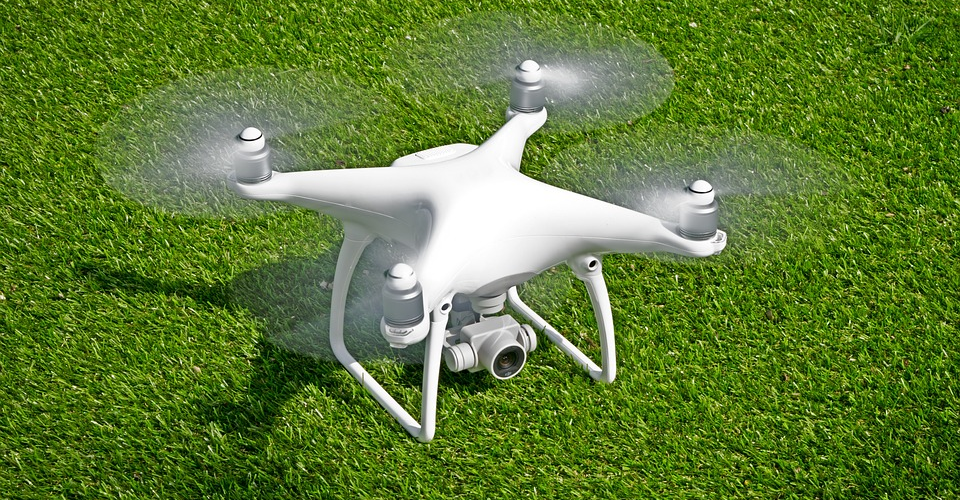How to Buy a Drone – Tips and Advice
Flying drones is popular not just for photography, but also for other purposes like racing, leisure, or as a hobby. Professionals like land surveyors, government officials, and law enforcement authorities also use drones for their work.
Drones are referred to by various names such as quadcopters, unmanned aerial vehicles (UAVs), and multirotors. No matter what name you call them by, they are quite popular. Because of this popularity, there are plenty of drone manufacturers offering a wide variety of products.
You can buy drones for as low as $40 or as high as a few thousand dollars. You can buy drones that are so simple to operate that even a 12-year old can play around with it. You can also buy advanced photography drones that have complex features and a reasonably long learning curve.
Amidst all these choices, figuring out which drone to purchase can become an overwhelming task. If you are thinking about purchasing your very first drone or upgrading to a new one, then the following is a guide that we wish we had when we began purchasing drones.
Know the jargon
The drone community uses a lot of lingo which new users may not be aware of. Knowing the jargon is important because when you research drones for purchase, you need to understand what is being discussed on forums, reviews, and product guides. We believe that the following terms are some of the most important ones to be aware of:
FPV – FPV stands for First Person View. It is the view that the camera on the drone sees. First Person View can be used to pilot the drone or frame pictures and videos. Adventure junkies who like to race their drones also like the First Person View for an exciting experience.
RTF – RTF stands for Ready To Fly. It means that the drone does not require any major assembly and can be flown straight out of the box. This is very different from a DIY drone, which stands for Do It Yourself. DIY drones require putting together every component. Most DJI drones are considered as RTF models.
RC – RC drones are basically remote-controlled drones. Anything that you operate using a remote controller is normally known as “RC”. Examples include RC cars, RC airplanes, and RC drones.
ARTF (or ARF) – ARTF stands for Almost Ready To Fly (ARF is for Almost Ready to Fly). These drones require a little bit of assembly and additional equipment like a remote controller.
BNF – BNF stands for Bird-N-Fly. These drones are RTF drones without a remote controller. However, you can buy a separate remote controller for BNF drones if you want. You can, in fact, use that remote controller to operate other BNF drones as well. So, you can save money by using a common remote controller for your entire collection of BNF drones.
RTH – RTH, or Return To Home, is a very handy feature to have on your drone. It basically allows the drone to return back to the point from where it took off. The drone flies back automatically to the “home” point if it is low on battery or if it goes too far and you don’t know how to bring it back. All you need to do is simply press the RTH button and the drone will use its GPS and sensors to return back home.
Brushless motor – Drones normally use one of two kinds of motors – brushed or brushless. Brushless motors are preferred because they are quieter, have a longer life, and are more efficient.
Headless mode – A new drone user may have difficulty in figuring out which way the drone is pointing and how that direction relates to the buttons that are being pushed on the remote controller. To make things simple, some drone models have the headless mode. In this mode, the drone moves in the direction that your remote controller commands. If you push the forward stick, the drone will move forward regardless of the direction in which the drone is pointing. The same goes for backward, leftward, and rightward movements.
You get what you pay for
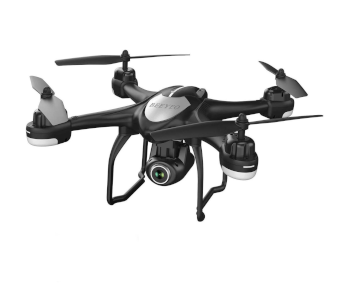
As with most consumer electronics products, the more features you want the more you have to pay for them. With drones, the list of features can be endless. You can get drones with GPS, obstacle avoiding sensors, high-quality camera capabilities, higher speed, longer range, better controls, and so on. If you are on a budget, then you can buy drones with none of those features. If the budget is not a question, then the sky is the limit.
You can buy a $25 Hubsan X4 drone and it is good enough to be used as a toy. It can do a few flips and keep you entertained. However, you can spend a lot more money and buy something like a DJI Spark which has gesture controls, can do tricks, and has features like Return-To-Home.
If you are a serious photographer, then you can spend close to a thousand dollars and buy something like a Mavic Air drone. It has front back upward and downward sensors that give you superior obstacle avoidance and excellent Return-to-Home functionality. The Mavic Air also has a pretty good camera that can capture 4K video.
So, a higher price equals a more feature-rich drone. When you are purchasing a drone, you need to first figure out all the features that you want. There is no point in simply price-hunting and buying a drone that does not have all the functions that you need. The features do not follow the price. Rather, the price question follows the features question.
Advertised flight times do not convey the true picture
The technology behind consumer and photography drones can be considered a relatively new one. After all, it has only been a few years since the popular drone models have been around. Drones are still in the initial stages of their technological evolution. This is especially true when it comes to battery life.
No matter how expensive a drone you buy, the battery life only allows for a few minutes of flight time. With some of the top DJI models, you will be lucky to get over 30 minutes of flying time on a full juice. Cheaper toy drones may not even hit 10 minutes. The flight times written on the specs sheet are for ideal flying conditions. Such conditions are normally found in testing facilities.
In reality, when you go out to fly your drone, you will probably encounter wind resistance. The stronger the wind, the more power the drone takes to fly. The heavier your drone due to camera gear, the more power it consumes. Even cold weather can shorten the battery life. So, when you compare drones for their flight times, subtract about 5 minutes or 15% to 20% from the advertised flight time.
Keep aside some money for extras

If you are going to spend a few hundred or a few thousand dollars on a drone, you will need everything at your disposal to make the most out of your expensive purchase. That everything includes extras. It’s like buying a camera. You don’t simply buy a camera along with the kit lens and never bother to purchase specialized lenses. You don’t buy an expensive smartphone without buying a sturdy secure cover for the phone.
Much in the same way, you don’t risk your big drone investment by flying a drone without propeller guards. Given the low flight times that drones offer, as mentioned in the point above, you will probably buy some spare batteries along with your new drone. Or, you might buy a fast charger so that you do not have to sit around when your drone has to return from a filming session due to low battery.
All of these accessories cost money. They can easily go north of a hundred dollars. If you are done buying the drone and accompanying accessories, you still need some money set aside for any repairs or maintenance costs. Sometimes, you crash your drone and need some spare parts to be shipped in. Perhaps you need to purchase drone insurance.
So, always keep some buffer within your budget to account for all of the expenses besides the drone’s price.
Safety and insurance
Flying a drone involves financial risks. If you crash your drone, then your hefty investment could be at stake. Drones can also cause damage to another person’s property. This is especially true if you are a drone photographer at a client or a third-party filming site.
Sometimes, a mishap with your drone could end up creating a liability for your client. Therefore, it is not uncommon for a client to insist on you having drone liability insurance as a condition to awarding you the job.
Therefore, as part of your drone purchasing process, you also have to search for insurance policies. You want a policy which not only gives you liability protection, but also covers financial costs for drone damages and repairs. Generally, a coverage level of $1 million should be good enough.
You can either purchase such a policy independently or you can join the Academy of Model Aeronautics. An AMA-member gets $2,500,000 comprehensive liability insurance, $25,000 accidental coverage, $10,000 accidental death coverage, and $1000 theft, fire, and vandalism coverage.
Yes, most flyers need an FAA registration
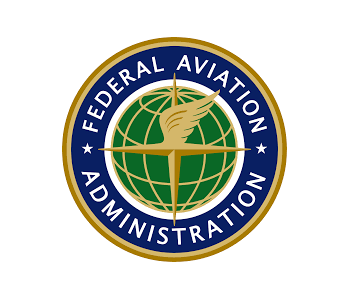
Unless you are planning to fly inexpensive toy drones that weigh under 0.55 pounds, you will need to register with the FAA. Even if you are planning to fly your drone for recreation, you still need to register your drone with the FAA as long as the drone weighs between 0.55 pounds and 55 pounds.
Penalties for not registering can range from $27,500 to $250,000. Imprisonment up to 3 years is also possible. So, you have to be very particular about FAA regulations regarding drones. The process is quite straightforward, costs only $5, and requires you to visit the FAA website. The idea behind FAA registration is to ensure that you are aware of the FAA’s safety guidelines.
After you have registered your drone, you will receive a printable FAA label with your unique number. This needs to go on your drone body. In order to be a commercial drone pilot, you need an FAA license as well which involves a 60-question multiple-choice exam and a background check.
You have to be smart about how other people perceive you
When you fly a drone, people will show curiosity. Some of this curiosity will be positive, while some will be negative. Everyone thinks differently. Therefore, you should anticipate some objections and be smart enough to handle all sorts of questions.
Sometimes, people will simply ask you innocuous questions about the features of your drone or how the drone is being controlled. At other times, people will object as to why you are invading their privacy by flying a drone over their “personal space”. Even if you are flying the drone in a legal way in an open space, people may object that the aerial location gives the drone (and its operator) a view into their home or backyard.
It is always a good idea to be on the right side of the law and fly only in places where you are allowed to. If you need to intimate someone prior to flying the drone, then do so. You should be able to defend yourself when someone decides to take objections against your drone flying activities.
Top Drone Models
Now that you know all about the nuances of purchasing a drone and which questions to ask during the buying process, let us look at some of the top drone models in different categories.
Racing
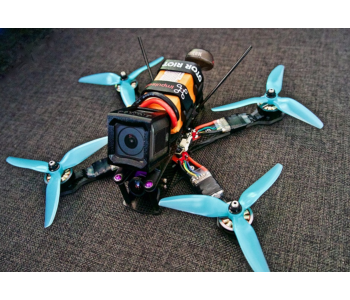
If you are buying a drone to satisfy your need for speed, then you want an aircraft that can move fast and do some tricks. We find that the Yuneec Firebird is a great option. It can go as fast as 51 mph. The Parrot Disco and the Yuneec Typhoon H Pro (top speed of 70 mph) are great options as well. If you have a reasonably large budget, then the Fat Shark 101 and the UVify Draco are great racing drones as well.
Photography
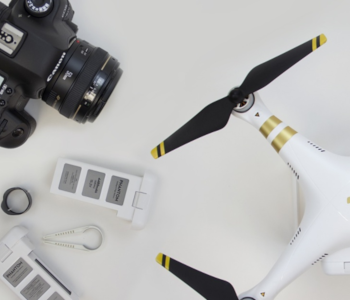
DJI seems to have a monopoly on the camera drone segment. It is by far the most popular brand among vloggers and professional photographers. DJI has the Phantom series and the Mavic series, both of which offer excellent models that fit every budget and technical specification requirements.
Popular action camera brand GoPro has also joined the drone bandwagon with its GoPro Karma drone. There is plenty of choice in the photography drone segment and your challenge will be to select the best model rather than not being able to find a good drone.
Toy drones
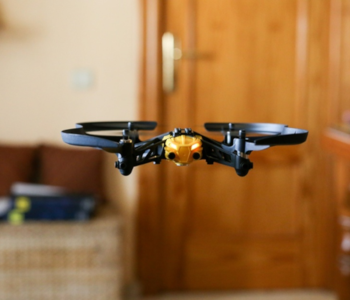
If you looking for Christmas gift ideas for your young one, then try a toy drone. They are inexpensive but can be a lot of fun to fly in the backyard. If you want a cheap toy drone, then the Hubsan X4 can be bought for a measly $25. The Syma X5C also receives some great reviews. It has a 6-axis gyro stabilization feature and the drone performs flips to keep its flier entertained.

